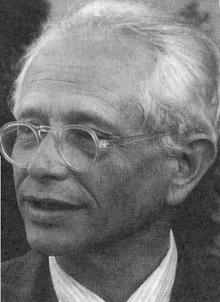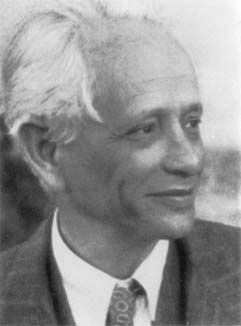

Max Dehn Seminar
on Geometry, Topology, Dynamics, and Groups
Academic year 2010 - 2011
| Date | Speaker | Title — click for abstract (if available) |
| September 8, 2010 | Christopher Cashen University of Utah |
Splitting Line Patterns in Free Groups
I will talk about splitting a free group relative to a line pattern.
|
| September 22, 2010 | Domingo Toledo University of Utah |
Cubic surfaces and representations of SL(2)
It is a classical fact, going back to Fricke and Klein, that
the relative representation variety of the fundamental group of
the quadruply punctured sphere with fixed traces A, B. C. D at
the punctures is an affine cubic surface. Since cubic surfaces
depend on 4 parameters it is natural question, observed by
several authors, whether every cubic surface can be obtained
this way. The purpose of this talk is to present a proof of
this fact. This is joint work with Bill Goldman.
|
| October 20, 2010 | Nat Smale University of Utah |
Cohomology and Hodge Theory at a Fixed Scale for Metric Spaces
For a compact metric space (even as simple as a finite set of
points in Euclidean space) there may appear to be nontrivial homology
classes at certain fixed scales. I will discuss some recent results on the
development of a cohomology theory at a fixed scale for compact metric
spaces carrying a Borel measure. For metric spaces that satisfy certain
conditions, a corresponding Hodge theory holds. In the special case of
Riemannian manifolds at small scales, the corresponding spaces of harmonic
functions are isomorphic to the classical ones (and thus the DeRham
cohomology).
|
| January 31, 2011 | Juan Souto University of Michigan |
Homomorphisms between mapping class groups
Suppose that \(X\) and \(Y\) are surfaces of finite topological
type with genus \(g_X\geq 6\) and \(g_Y\leq 2g_X-1\). We describe all
homomorphisms \(Map(X)\to Map(Y)\) between the associated mapping class
groups. As a consequence we prove that, if \(X\) and \(Y\) have finite
analytic type as Riemann surfaces, every non-constant holomorphic map
\(M(X)\to M(Y)\) between the corresponding moduli spaces is a forgetful
map. This is join work with Javier Aramayona.
|
| February 9, 2011 | Richard Hain Duke University | Topology and Arithmetic |
| February 16, 2011 | Tom Church University of Chicago |
Representation theory and homological stability
Homological stability is a remarkable phenomenon where for certain
sequences \(X_n\) of groups or spaces -- for example \(\mathrm{SL}(n,Z)\), the braid
group \(B_n\), or the moduli space \(M_n\) of genus \(n\) curves -- it turns out
that the homology groups \(H_i(X_n)\) do not depend on \(n\) once \(n\) is large
enough. But for many natural analogous sequences, from pure braid
groups to congruence groups to Torelli groups, homological stability
fails horribly. In these cases the rank of \(H_i(X_n)\) blows up to
infinity, and in the latter two cases almost nothing is known about
\(H_i(X_n)\); indeed it's possible there is no nice "closed form" for the
answers.
While doing some homology computations for the Torelli group, we found what looked like the shadow of an overarching pattern. In order to explain it and to formulate a specific conjecture, we came up with the notion of "representation stability" for a sequence of representations of groups. This makes it possible to meaningfully talk about "the stable homology of the pure braid group" or "the stable homology of the Torelli group" even though the homology never stabilizes. This work is joint with Benson Farb. In this talk I will explain our broad picture and give two major applications. One is a surprisingly strong connection between representation stability for certain configuration spaces and arithmetic statistics for varieties over finite fields, joint with Jordan Ellenberg and Benson Farb. The other is representation stability for the homology of the configuration space of \(n\) distinct points on a manifold \(M\). |
| February 25, 2011 | Anna Lenzhen University of Rennes 1 | — |
| March 9, 2011 | Ruth Charney Brandeis University |
Divergence in right-angled Artin groups
The divergence, \(div(\alpha,r)\), of a geodesic \(\alpha\)
measures the length of the shortest path
between two points on \(\alpha\) that stays outside the ball of radius
\(r\) about their midpoint. We give a group
theoretic criterion for determining when a geodesic in a right-angled
Artin group \(G\) has super-linear divergence
and show that this divergence is at most quadratic. We use this to
describe the structure of the asymptotic cone
of \(G\) and to get a new proof that every non-abelian subgroup of \(G\)
has an infinite dimensional space of
quasimorphisms. (Joint work with Jason Behrstock.)
|
| April 18, 2011 | Anne Thomas University of Sydney |
Infinite generation of non-cocompact lattices on right-angled buildings
Let \(\Gamma\) be a non-cocompact lattice on a right-angled building \(X\).
Examples of such \(X\) include products of trees, or Bourdon's building
\(I_{p,q}\), which has apartments hyperbolic planes tesselated by
right-angled \(p\)-gons and all vertex links the complete bipartite graph
\(K_{q,q}\). We prove that if \(\Gamma\) has a strict fundamental domain then
\(\Gamma\) is not finitely generated. The proof uses a topological
criterion for finite generation and the separation properties of
subcomplexes of \(X\) called tree-walls. This is joint work with Kevin
Wortman.
|
| April 27, 2011 | Mladen Bestvina University of Utah |
On the complex of free factors
I will give an outline of a proof of the theorem of
Masur-Minsky that the curve complex is hyperbolic. The set of
nontrivial free factors, up to conjugacy, of a free group of rank n
forms the set of vertices of the complex of free factors. I will then
discuss hyperbolicity of this complex.
|
Current seminar Archive of past talks
Max Dehn Seminar is organized by Mladen Bestvina, Ken Bromberg, Patrick Reynolds,
Jing Tao, Domingo Toledo, and Kevin Wortman.
This web page is maintained by Patrick Reynolds and Jing Tao.

